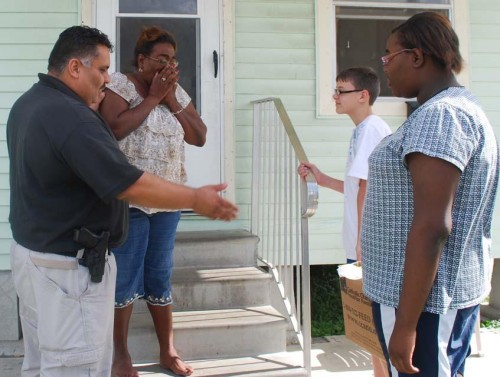Tuesday, Nov. 30
November 30, 2010
HPD reaches out to area’s needy with food boxes
December 2, 2010The National Transportation Safety Board has released a final report in which officials said a windshield that did not meet bird strike-resistant strength standards contributed to an offshore commuter helicopter crash that killed eight people, including both pilots, and injured one passenger when it was struck by a red-tailed hawk near Morgan City on Jan. 4, 2009.
According to investigators, the Sikorsky S-76C++ was registered to and operated by PHI, Inc. of Lafayette, and was headed to a Shell Oil Co. platform in the Gulf of Mexico when the helicopter went down 7 minutes after takeoff after a hawk was believed to have struck the aircraft’s windshield.
Investigators found that the aircraft had reached a flight level of 850 feet and was cruising at 135 knots when a loud “bang” was heard on the cockpit voice recorder. The sounds that followed included that of rushing wind, which would be consistent with loss of power in both engines. The helicopter crashed within a matter of seconds.
The final words heard on the voice recorder were:
“What the hell happened?” asked by one pilot.
“Low rotor,” said the second pilot.
“I cannot hear you,” said by the first pilot.
Feathers and remains of the hawk were found in the canopy and windshield of the aircraft.
The helicopter, which PHI used in its offshore commuting operation, had been originally equipped with a laminated glass windshield that complied with European bird-strike resistance standards.
Investigators found that PHI had replaced its windshields with lighter weight, aftermarket cast acrylic windshields that did not carry any bird-strike resistance standards.
In addition to hitting the hawk, which caused engine failure and disorientation of the pilots, NTSB investigators said a lack of Federal Aviation Administration regulations that would require windshields to be bird-strike resistant could be considered a contributing factor to the crash.
PHI, Inc. settled out of court with family members of the victims and the lone survivor for an undisclosed amount and confidential terms in October 2010. At that time, PHI lawyer Ross Cunningham said that the company “felt a moral responsibility to the families of those affected.”
The settlement did not resolve any claims against helicopter manufacturer Sikorsky Aircraft Corp or Aeronautical Accessories Inc., the maker of the Plexiglas windshield.
Sikorsky lawyer Richard Christovich went on the record and stated that the company denies any responsibility for the crash because the original windshields for the aircraft has been removed by PHI.
NTSB spokesman Ted Lopatkiewicz said he did not know if any addition litigation would take place in this case and was not sure if the FAA would issue fines.
FAA spokesman Lynn Lunsford said PHI removed the Plexiglas canopies and replaced them with stronger glass after the incident.
In completing its report, the NTSB recommended that the FAA look into certification standards for helicopter windshields among other design elements for the S-76C++.





